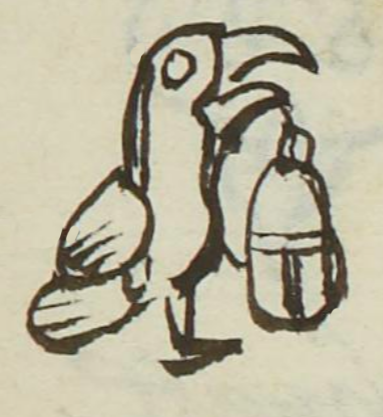Coltototl (MH522r)
This black-line drawing of the compound glyph for the personal name Coltototl (here, attested as a man's name) has two prominent features. One is a jingle bell (coyolli) and the other is a bird (tototl). The bird is standing, facing toward the viewer's right. It appears that the bell may be held by a string that hangs from the bird's beak, which is open. The bird's eye is also open.
Stephanie Wood
The root for bell, coyol-, is not quite the same as the start of the name as glossed, Col-. But it could be considered something of a homonym. If so, the simple translation would be Bell-Bird, which may be a reference to the sound it makes. But, of course, the meaning of the name may diverge from its literal translation.
Stephanie Wood
felipe coltototl
Felipe Coltototl
Stephanie Wood
1560
Stephanie Wood
bells, birds, campanillas, campanas, pinjantes, pájaros, metales, suenan, nombres de hombres

coyol(li), a jingle bell, https://nahuatl.wired-humanities.org/content/coyolli
toto(tl), a bird, https://nahuatl.wired-humanities.org/content/tototl
colto(tl), a medicinal herb, https://nahuatl.wired-humanities.org/content/coltotl
Cascabel-Pájaro
Stephanie Wood
Matrícula de Huexotzinco, folio 522r, World Digital Library.
https://www.loc.gov/resource/gdcwdl.wdl_15282/?sp=123&st=image
This manuscript is hosted by the Library of Congress and the World Digital Library; used here with the Creative Commons, “Attribution-NonCommercial-ShareAlike 3.0 License” (CC-BY-NC-SAq 3.0).







